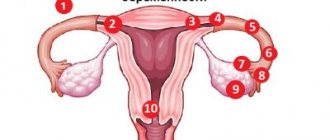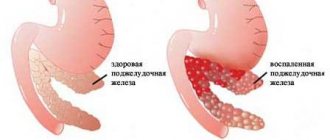What are moles?
In fact, this benign formation is a pigmented area of the skin that appears as a result of an increase in the concentration of melanocytes in the cells. The mole also has a medical name - nevus.
Normally, every person develops new nevi throughout their life, especially during periods of active hormonal changes (puberty, pregnancy, menopause, etc.). Also, new moles can appear under the influence of ultraviolet radiation.
Education differs in the following ways:
- color (brown, black, pink, purple and blending into the skin);
- size (large, small);
- shape (pointed, convex, hanging).
If you notice that the volume or color of the nevus has changed, the area is red, itchy, burning or bleeding, you should immediately contact a dermatologist or oncologist to prevent the risk of developing malignant melanoma.
Why moles appear
Most moles appear at the age of 10 years. There are cases when a child is born with moles. This is a rare but completely normal occurrence. It is believed that moles appear during the period of hormonal changes in the body. Most often, nevi appear during puberty, that is, at the age of 11–14 years. Hormonal changes are observed during pregnancy, menopause, while taking certain medications and after abortion.
Women are more susceptible to hormonal changes than men. This is why females have more moles. Also, women often have moles on the mucous membranes. Moles may appear during pregnancy, and this is quite normal.
New moles on expectant mothers
Many pregnant women panic about the sudden appearance of new moles on the body or the modification of old ones. Why do they arise?
In the case of pregnancy, the culprit for the appearance of nevi is hormonal imbalance and restructuring of the endocrine system and glands. Also, the development of moles can be affected by certain medications that a pregnant woman takes. Often over the summer, the expectant mother gains several new moles, which is associated with active irradiation of the skin by solar ultraviolet radiation. That is why pregnant women are recommended to sunbathe moderately in the open sun.
The appearance of moles can also occur in the case of artificially induced childbirth, abortion, and also after the birth of a child during lactation. Hormones are necessary for the active development of the fetus and the restructuring of the female body into “incubator” mode. Therefore, the active appearance of benign formations occurs in the first and third trimester.
Interestingly, it is the presence of new moles that indicates the high-quality functioning of the endocrine system. Sometimes after the birth of a child such formations disappear, and sometimes they remain, recalling the happiness of the birth of a new life.
Myths about moles during pregnancy
There are many superstitions among people regarding moles. The location of a birthmark can tell about a person’s health, character, or even fate. There are the following myths regarding nevi during pregnancy:
- If a new nevus forms during pregnancy, an identical mole appears on the child’s body. The same mole does not appear in the baby, but with a large number of benign neoplasms in the mother, he is also born with a predisposition to nevi.
- If, greatly frightened, the expectant mother grabs some part of the body, then the baby will have a birthmark in the same place. This is nothing more than a superstition that was created so that a pregnant woman would worry less and get into stressful situations.
- A mole determines fate. Each mole on the body is assigned one or another fateful meaning. Thus, a woman with a birthmark on her nipple foretells a happy family life and motherhood, and a new formation on her neck indicates imminent financial well-being. Such beliefs have no scientific support.
You can also often hear that if a woman steals something during pregnancy, the child will have a birthmark in the shape of that object. Many people do not believe in this superstition, but some mothers claim that their baby really has such a mole.
When nevi can be dangerous
The expectant mother should regularly examine moles on her body, especially new ones. Sometimes it happens that old and new nevi begin to transform and change.
You should be wary if you notice the following metamorphoses:
- the formation has darkened or changed color in a different range;
- the spot has grown in width;
- the shape has changed (the flat homeland has become convex, hanging);
- discomfort, itching, burning, redness or pain is felt in the area;
- the mole is inflamed and bleeding;
- the area is swollen or numb.
Information In case of such changes, do not panic, however, contact a dermatovenerologist or oncologist. In most situations, a change in a mole was caused by the stress of pregnancy or a hormonal surge, but it’s worth being safe.
In any case, before going to the doctor and after it, regularly monitor the “suspicious” nevus and follow several safety rules:
- hide it from the influence of sunlight and ultraviolet radiation (tanning and solarium are not recommended);
- isolate the area, avoid rubbing it with clothing, traumatizing it with a washcloth or hand;
- if the area is itchy and red, do not scratch the formation under any circumstances or apply unknown compresses, applications, bandages or ointments;
- If you notice an accumulation of fluid in a mole, it is forbidden to squeeze it out or heat it, but you should immediately consult a doctor.
What should I do if existing moles start to grow during pregnancy?
If a mole has slightly increased in size and does not cause any further problems, then perhaps the reason for its growth is its location on the body (on the mammary glands or abdomen). As the baby grows in the womb, the mother's breasts enlarge and her tummy grows, and at the same time the skin in these places stretches, and the mole may also slightly increase in size.
It’s another matter if it begins to grow (for example, as a result of its injury) and/or certain transformations occur with it:
- changed its appearance - the boundaries became blurred and the shape asymmetrical;
- the color or shade has changed;
- significantly increased in size and became denser;
- cracks appeared on the surface;
- the structure acquired relief;
- black nodules appeared around the perimeter;
- a bright ring appears around (inflammation);
- painful sensations arose near her - itching, burning, tension;
- it periodically bleeds (hairs growing from it may fall out).
The occurrence of any of the above symptoms is a reason to immediately consult a doctor. A visit to the doctor cannot be postponed for a long period of time, because the process of degeneration of a mole into a malignant neoplasm (melanoma) can occur rapidly.
Is it possible and worth removing a mole for pregnant women?
Expectant mothers often worry whether moles can be removed if they have changed or grown.
Doctors consider removal strictly necessary in situations where there is a risk of the nevus degenerating into melanoma. As a rule, this happens rarely - once every 100 thousand cases. However, malignant melanoma is almost always fatal, so it is better to prevent this situation even if there is a small chance.
Information Precancerous nevi are removed only after childbirth. Immediate surgery is prescribed only in extreme cases and with the obligatory signing of papers on consent to possible consequences and complications.
The removal procedure is performed under local anesthesia, quite quickly and painlessly. There are several popular ways to get rid of unwanted formation.
- Laser excision. The most modern and popular method that helps to burn out a mole without the need for anesthesia. This method guarantees complete removal of the formation along with the root, which prevents the risk of re-development. Also, the skin heals in 2-3 weeks, after which there are no marks or pits left at the site of the nevus.
- Surgical excision. Carried out in case of a positive conclusion and permission from the oncologist. Accompanied by drug therapy.
- Cryotherapy. In an outpatient setting, the doctor burns out the formation using low temperatures obtained as a result of the use of liquid nitrogen.
- Electrocoagulation. A fairly common method that helps remove a mole under the influence of high frequency current. The doctor grabs the formation with a special loop and burns it out, after which a small light scar forms at the site of the procedure. It is performed under local anesthesia.
- Radio wave method. A less common method that involves the use of radio wave impacts in the removal area.
Why is it not recommended to carry out such simple procedures during pregnancy? The fact is that if handled carelessly, the technology can be damaged, which will cause irreversible side effects. For the same reason, you cannot remove a mole yourself, or resort to the services of witch doctors, healers or friends.
Normally, new moles do not cause concern to either the mother or the baby, and therefore do not require special attention. However, due to the rare possibility of the formation degenerating into a tumor, carefully monitor the nevus that has undergone transformation.
Briefly about the main thing
A mole is a pigmented formation on human skin that arises as a result of cells overflowing with melanocytes. In a certain place where the accumulation of melanocytes is too high, the very mark that we are accustomed to calling a mole is formed. It also has a medical name, which sounds like nevus.
A nevus is a benign formation and is therefore considered harmless. Even if you have a lot of moles on your skin, this is not a bad sign if they do not bother or cause discomfort. You only need to be wary if a mole suddenly begins to grow, itch, change color, or bleed. Any unusual phenomena with a mole should alarm its owner. The best solution in this case would be to immediately visit a good dermatologist. In rare cases, a mole can develop into a malignant tumor called melanoma. This is the most dangerous type of cancer, developing rapidly and quite often resulting in death.
Review of Safe Removal Methods
Electrocoagulation
Contraindications:
- Herpes.
- Oncology.
- Skin diseases.
Radio wave method
The technique involves the use of high frequency radio waves. It is the most effective and safest method. The undoubted advantage is the accuracy of the procedure, safety for surrounding tissues, short duration of the procedure, and the possibility of use in difficult places (eyelids).
Contraindications:
- infectious diseases, the presence of a focus of inflammation;
- oncology;
- diabetes;
- glaucoma;
- skin diseases.
Unfortunately, some moles are melanomatous and under the influence of various unfavorable factors (ultraviolet radiation, trauma, chemical burns) can become malignant (degenerate into cancer).
In this regard, people who have large nevi should be periodically observed by a dermatologist.
With such formations you need to be as careful as possible and not expose them to sunlight, injury, in some cases it is better to completely remove them surgically.
Causes
The appearance of hanging moles during pregnancy is associated with the following factors:
- exposure to ultraviolet rays;
- viruses and injuries;
- changes in hormonal levels.
Most often, in pregnant women, the formation of new nevi and angiomas is explained by a restructuring of the endocrine system. The peak of the phenomenon occurs in the second trimester. Then, during delivery, the body will face another hormonal surge, and the number of spots may change again: new ones will appear, and old ones will disappear or turn pale.
If a pregnant woman develops papillomas, her body is infected with a virus. HPV is transmitted through sexual contact and through household contact. There are more than 100 varieties of papillomavirus, and only a few of them pose a danger to the expectant mother and fetus.
About 75% of all men and women will be infected with HPV at least once during their lifetime. It can be present in the body in a latent form, and appear during pregnancy due to weakened immunity. If the expectant mother is constantly monitored by a doctor, HPV does not pose a threat.
You should only worry if a virus of type 16 or 18 is detected. It manifests itself as flat papillomas on the cervix and vaginal mucosa. Such a virus can be transmitted to the baby during childbirth and cause respiratory tract papillomatosis, a serious disease that can be treated surgically. To prevent infection of the child, if HPV type 16 is detected, a woman is recommended to have a cesarean section.
Interesting
During pregnancy, as well as during breastfeeding, a frantic surge of hormones is observed in the female body. These substances are responsible for regulating all metabolic processes of the body, as well as for its growth. While carrying a child, the female body begins to work for two people, which is especially difficult for it in the second half of pregnancy. That is why hormones come to the rescue, which also begin to be produced in double quantities. They are the ones who help the body cope with the emerging load. If you have moles during pregnancy, it means that your hormonal system is doing its job perfectly. Don’t be scared or panic; it often happens that moles that appear during pregnancy disappear over time. However, this is not always the case; your new marks may remain with you for life. Let them be a happy reminder of the wonderful time of pregnancy.









